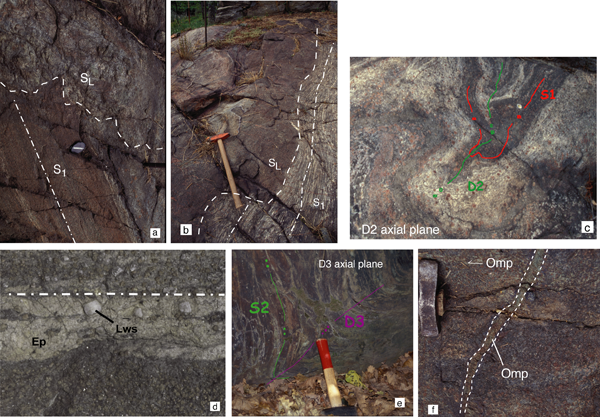Five bulk-rock compositions were distinguished at meso- and microscale: eclogites, eclogitic metabasics, schists, serpentinites and ultramafics. Eclogites (Fig. 2) were also distinguished in Type I eclogites (s.s.); Type II, Lws-bearing eclogites (where Lws is always in lozenge-shape pseudomorphs); Type III, Amp-bearing eclogites. Eclogitic metabasics contain more than 50% of Amp, schists contain mainly Amp- and Chl and ultramafics are composed of Serp and minor Px, opaque minerals and Cc.
Figure 2. Amphibolite and eclogite structure

(a and b) S1 foliation within amphibole-bearing eclogites, marked by SPO of amphiboles, defines an angle (from 0 to 90°) with respect to the SL (original magmatic layering?) between amphibole-bearing eclogites and eclogitic metabasics.
c) S1 foliation is parallel to SL and defined by dark amphibole-rich eclogite layers and light epidote-rich eclogite layers. D2 folds bend S1 foliation.
d) Alternated layers of lawsonite-bearing eclogites and amphibole-bearing eclogites. SL is parallel to S1 . Lawsonite porphyroblasts, overgrowing S1 foliation, are characterized by lozenge shape and light colour.
e) D3 metre scale folding within eclogites.
f) Centimetre thick fracture filled by omphacite; millimetre thick omphacite porphyroblasts occur in a 30 cm-thick zone.